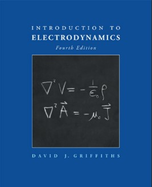Solution Found!
A transformer (Prob. 7.57) takes an input AC voltage of
Chapter 7, Problem 58P(choose chapter or problem)
Problem 58P
A transformer (Prob. 7.57) takes an input AC voltage of amplitude V1, and delivers an output voltage of amplitude V2, which is determined by the turns ratio (V2/V1 = N2/N1). If N2 > N1, the output voltage is greater than the input voltage. Why doesn’t this violate conservation of energy? Answer: Power is the product of voltage and current; if the voltage goes up, the current must come down. The purpose of this problem is to see exactly how this works out, in a simplified model.
(a) In an ideal transformer, the same flux passes through all turns of the primary and of the secondary. Show that in this case M² = L1L2, where M is the mutual inductance of the coils, and L1, L2 are their individual self-inductances.
(b) Suppose the primary is driven with AC voltage Vin = V1 cos (ωt), and the secondary is connected to a resistor, R. Show that the two currents satisfy the relations
(c) Using the result in (a), solve these equations for I1(t) and I2(t). (Assume I1 has no DC component.)
(d) Show that the output voltage (Vout = I2R) divided by the input voltage (Vin) is equal to the turns ratio: Vout/Vin = N2/N1.
(e) Calculate the input power (Pin = Vin I1) and the output power (Pout = Vout I2), and show that their averages over a full cycle are equal.
Questions & Answers
QUESTION:
Problem 58P
A transformer (Prob. 7.57) takes an input AC voltage of amplitude V1, and delivers an output voltage of amplitude V2, which is determined by the turns ratio (V2/V1 = N2/N1). If N2 > N1, the output voltage is greater than the input voltage. Why doesn’t this violate conservation of energy? Answer: Power is the product of voltage and current; if the voltage goes up, the current must come down. The purpose of this problem is to see exactly how this works out, in a simplified model.
(a) In an ideal transformer, the same flux passes through all turns of the primary and of the secondary. Show that in this case M² = L1L2, where M is the mutual inductance of the coils, and L1, L2 are their individual self-inductances.
(b) Suppose the primary is driven with AC voltage Vin = V1 cos (ωt), and the secondary is connected to a resistor, R. Show that the two currents satisfy the relations
(c) Using the result in (a), solve these equations for I1(t) and I2(t). (Assume I1 has no DC component.)
(d) Show that the output voltage (Vout = I2R) divided by the input voltage (Vin) is equal to the turns ratio: Vout/Vin = N2/N1.
(e) Calculate the input power (Pin = Vin I1) and the output power (Pout = Vout I2), and show that their averages over a full cycle are equal.
ANSWER:
Solution 58P
Step 1 of 6:
- If we consider an ideal transformer in which the flux passes through all turns of the primary and of the secondary.
We need to prove that
Where is the mutual inductance and and are the individual self inductance.
Let be the current flowing through coil and be the current flowing through coil . And be the flux through the turn.
Implies .............(1)
Implies .............(2)
Comparing equation and ,
